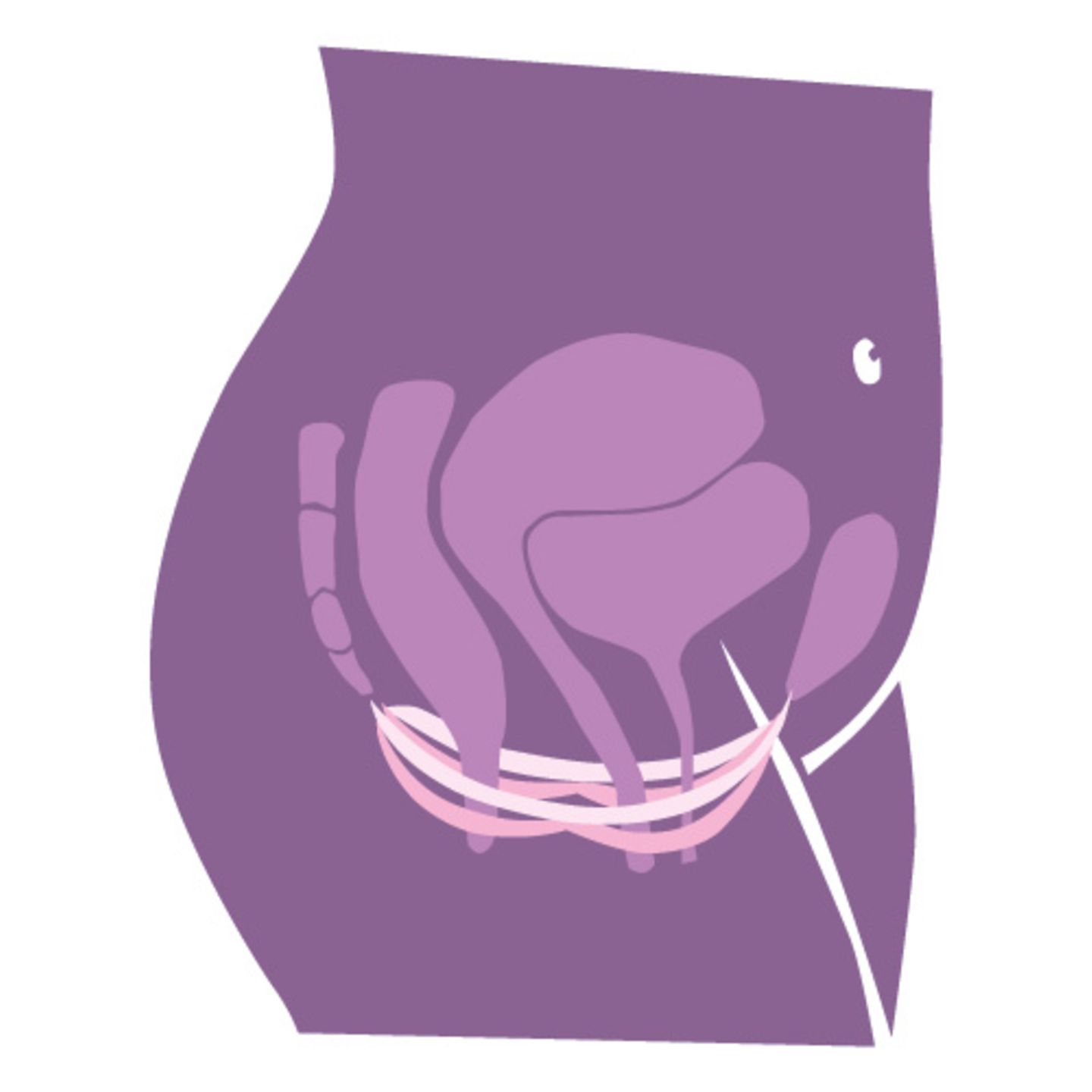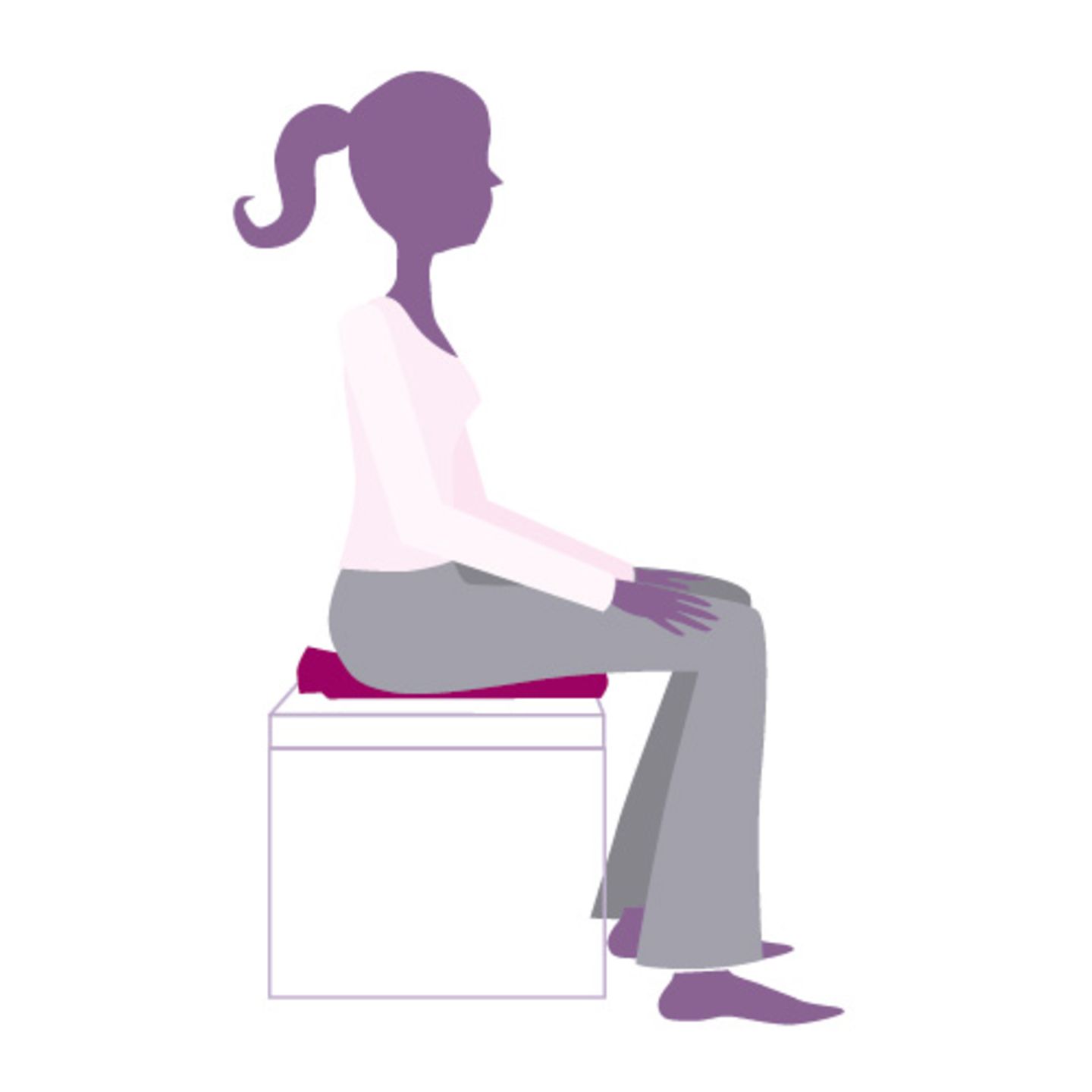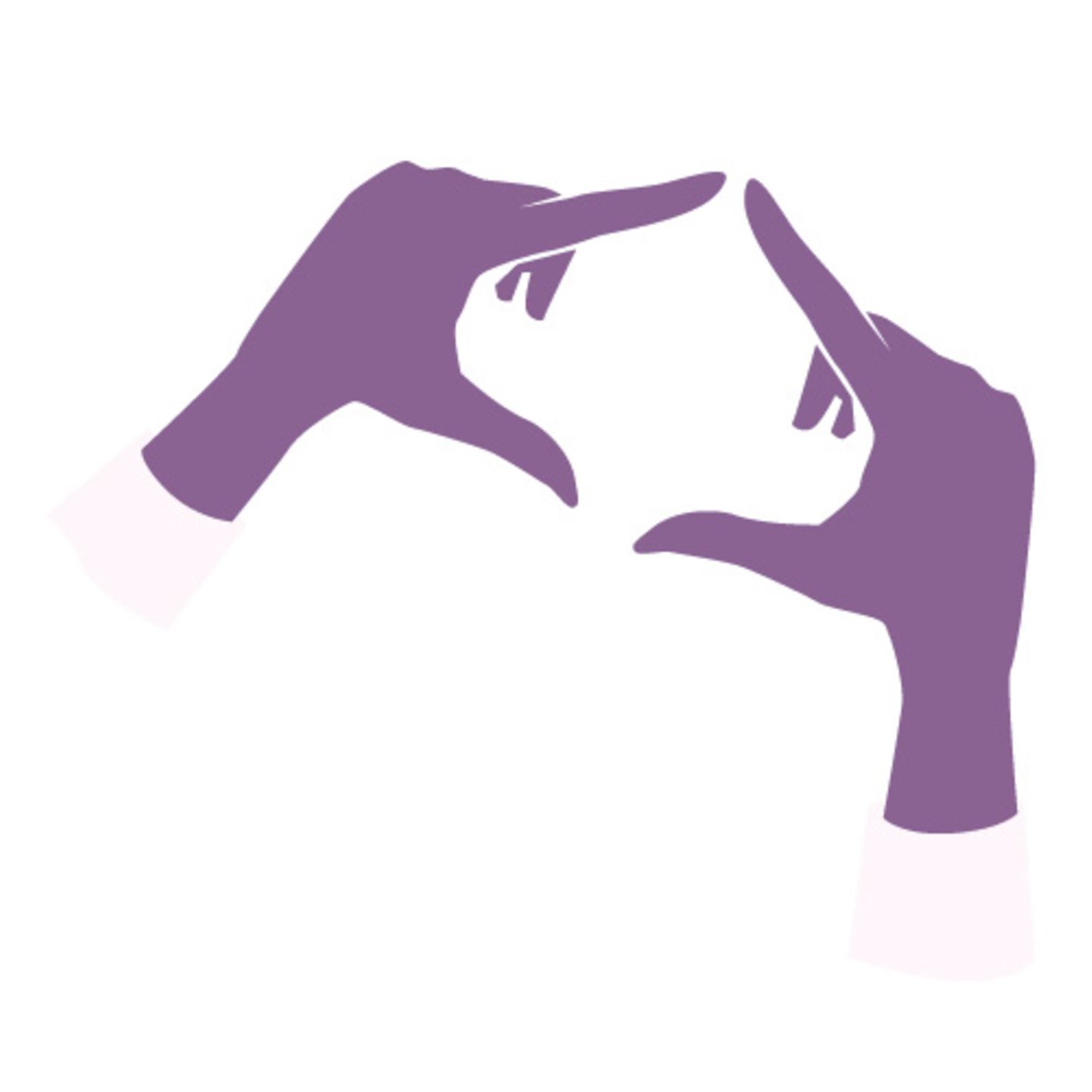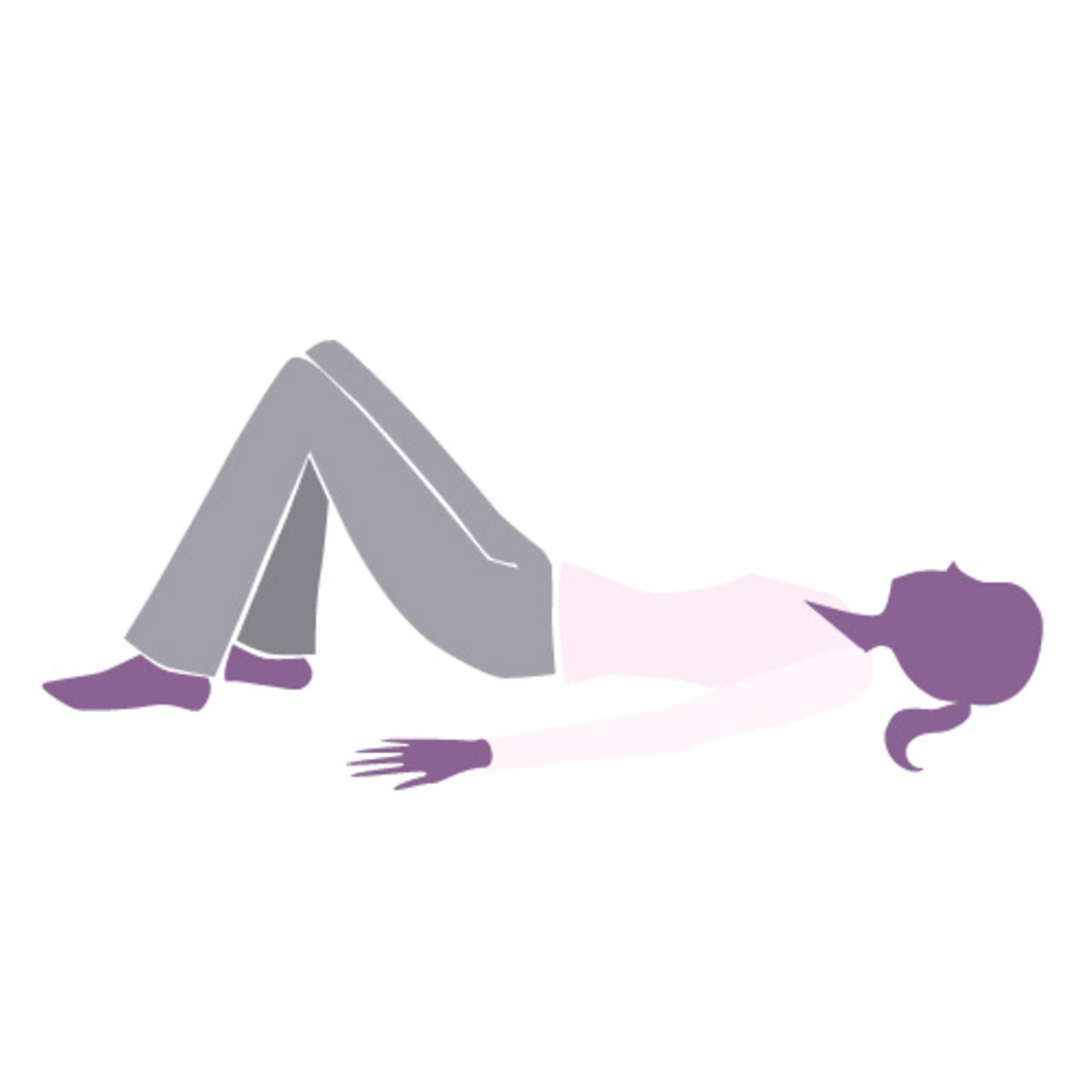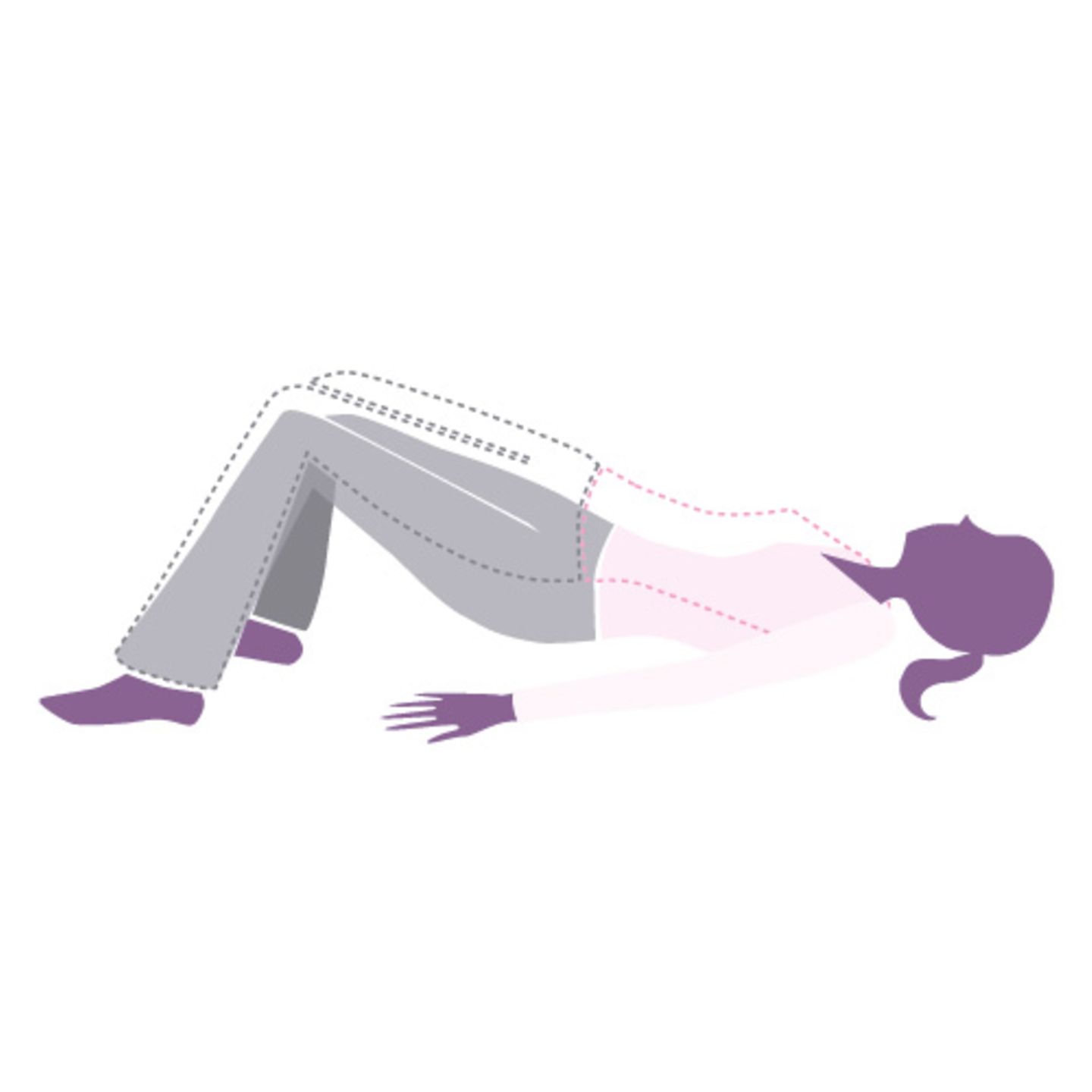Menopause and sexuality: No longer in the mood for pleasure?

Yes, menopause and sexuality are connected. Some women experience a loss of libido in midlife. Sex no longer seems as important or enjoyable. There can be several reasons for this, and there are various ways to overcome it. You can find out all the details here.
It's supposed to be the most wonderful thing in the world: having sex. making love. enjoying pleasure. Why should it be any different during menopause ? A legitimate question. However, in midlife, sex often becomes secondary. Or doesn't happen at all. It's a shame, really. So where does this lack of desire come from?
How are menopause and sexuality related?Menopause is characterized by a decline in the production of sex hormones . This doesn't happen in a nice, orderly, linear manner, but rather results in considerable hormonal chaos . The process basically works like this: Some time before menopause, the last menstrual period , the progesterone level begins to decline slowly. After the last menstruation, the estrogen level then drops abruptly (reading tip: our article on menopause explains the processes in more detail). Because when there is no longer a cycle, and no more eggs in the ovaries that can mature and be released into the fallopian tubes, hardly any estrogen and progesterone, the female sex hormones, are produced.
How does this relate to sexuality and libido? This question hasn't been particularly well researched yet. What is certain, however, is that our sense of pleasure is not only neurally (i.e., emanating from the nervous system) but also hormonally controlled . Arousal increases the activity of the autonomic nervous system and hormone release. For example, blood flow to the intimate area increases, and glands in the vagina secrete a substance that acts like the body's own lubricant. However, hormones that are no longer present cannot be released and ensure proper lubrication. Hormonal fluctuations, such as those typical during menopause, therefore have an indirect effect on your sex life.
To make matters worse, a whole range of menopausal symptoms can occur during the menopause. While only one in three women is severely or very severely affected, even relatively mild symptoms can dampen desire during this phase .
What are the possible reasons for the loss of libido?The aforementioned menopausal symptoms that occur during this phase of life can be roughly divided into physical or psychological symptoms , and they often combine. Both types can affect your love life.
- Tiredness – Honey, I'm tired! And that's no excuse. The exhaustion and lack of energy that some women experience during menopause can stifle feelings of desire.
- Vaginal dryness – Due to hormonal changes and, above all, the lack of estrogen, the skin all over the body becomes thinner, drier, and more sensitive. In the intimate area, as already mentioned, vaginal secretions are absent. Even when you're emotionally aroused, the vagina remains dry, and penetration becomes very painful.
- Joint pain – When skin and mucous membranes become thinner and drier, this also affects the connective tissue in the joints. While pain during movement is often age-related, hormonal changes after menopause can also contribute.
- Mood swings, irritability – The hormonal imbalance during menopause can be similar to the emotional rollercoaster of puberty. Moods plummet rapidly, and depressive moods can take hold and become a life killer.
- Stress – Menopause often occurs during a period of life in which major upheavals occur in one's personal life. Perhaps children move out or one's own parents become dependent on care. Feelings like grief, loss, and worry sometimes leave no room for sexual desire.
- Relationship problems – Who says it's all just hormonal changes? Perhaps love has faded over the years and given way to boredom. Or maybe you've been single for a while and just don't have the energy or desire to date or get involved with someone new.
- Side effects of medications or chronic illnesses – Certain medications (such as antidepressants and painkillers) can dampen your sex drive. Read the package insert and talk to your doctor if you are uncomfortable with this side effect. Alternative medications may be available, or the dosage may be adjustable.
The psychological component of certain physical symptoms of menopause should not be underestimated either. If you no longer feel comfortable in your body, perhaps consider yourself unsexy , it's difficult to give in to desire. Even if you secretly think it's wrong and wish it were different.
- Weight problems – Because metabolism changes along with hormone levels, women who don't change their diet from before usually gain a few pounds (also read our article on weight gain during menopause ). Figures change, and a belly grows. Even if our minds tell us that our appearance isn't what makes us lovable and we know we should accept our bodies as they are, our feelings are difficult to override with our minds. It may take time to accept the new, curvier silhouette, the unfamiliar excess weight, and to be happy to show ourselves to our partner (again).
- Hair loss/growth in unwanted places – This may sound superficial, but thinning hair on the head and increased body hair, for example, on the legs or the growth of a mustache, can be the last straw. In other words, it's better to pull the covers over your head than enjoy physical lovemaking between the sheets. Because there's never just one cause for the lack of desire. Undoubtedly, several factors always come together.
Topical hormone therapy, which raises estrogen levels, can help with hormonal symptoms, especially vaginal dryness. Vaginal creams or suppositories supply the area with estrogen, thus resolving the problem: The vagina can become moist again (lubricated), and sex is no longer painful. Because the hormones are absorbed through the skin and bypass the digestive tract, the risk potential of hormone administration is significantly reduced. Talk to your gynecologist about treatment options for estrogen deficiency . Our article explains more about the pros and cons of hormone replacement therapy .

If the reasons are more psychological, desire often returns on its own once your well-being improves . Targeted stress reduction through relaxation techniques such as autogenic training , Qi Gong, or meditation, a change in diet, or even psychotherapy can be very helpful. But be patient! Unfortunately, there's no switch you can simply flip. Talk to your partner about what you like and don't like. Maybe things are different now than they used to be.
Is there also the opposite case, that libido increases during menopause?There is. Some women find it downright liberating when the topic of contraception is finally off the table. Or when their children leave the nest and they can focus more on themselves and enjoy an intimate, loving time together. Perhaps a new love comes into their lives. Butterflies in the stomach usually quickly revive their libido .
How long do I need to use contraception?When the egg supply is irretrievably depleted and the last period has occurred can only be determined retrospectively. If a woman is 50 or older, it is assumed that after 12 months without a period, she has entered menopause and can no longer become pregnant. For women under 50, expert advice is to continue using contraception for two years after their last menstrual period. While pregnancy at this age is relatively unlikely, it is not impossible.
Sources:
Brigitte
Well-trained biceps – that's the dream of many women. Yet, there are muscles in our body that are far more important for our health, our energy, our charisma, and our zest for life. But these muscles work in secret, unnoticed and taboo – our pelvic floor muscles.
Even those who know it usually don't pay attention to it. Only when it weakens do we realize what it does for us every day. The palm-sized, three-layered muscles of our pelvic floor can do far more than effectively close our pelvic opening. "The pelvic floor is the power center in the middle of our body," says Irene Lang-Reeves, a biologist and naturopathic practitioner with many years of experience in body psychotherapy. "If you activate it, you can completely change your life. You become more efficient and fitter, you're in a better mood, and you simply feel younger."
The pelvic floor connects the feet and legs to the upper body and keeps us upright. This muscle, located around the pubic bone, is key to all our movements, to good posture, dynamics, stable balance, and harmonious coordination – including during sex. If its function is impaired or only partially functioning properly, it can have consequences for the entire body.
If it's strong and active and we regularly perform pelvic floor exercises , a healthy tension builds up throughout our body. Our movements are fluid, we stand firmly on the ground, but our shoulders are relaxed, open, and freely upward. "If I consciously move from the pelvic floor, the tone of the entire core muscles changes," says expert Irene Lang-Reeves. "In two seconds, my stomach is flatter, and my inner thighs are lifted. I'm more dynamic, feel better, and immediately look better."
Such a posture not only radiates beauty and strength, it also makes us more mentally resilient, stable, and calm. And it provides us with energy. This is nothing new for Asian movement theories. Whether yoga, qigong, or aikido, they all utilize the active pelvic floor —even if they call this power something else—to improve the flow of life energy. "Measurements have shown," says the expert, "that targeted contraction of the pubococcygeus muscle (PC) in the pelvic floor increases the flow of energy through the spinal cord to the brain. An active pelvic floor thus functions like a kind of dynamo—it recharges the entire body through movement."
Focus on pelvic floor trainingReason enough to train your pelvic floor muscles regularly. Ideally, before the first signs of weakness appear—especially before the drop in estrogen during menopause causes them to weaken too much, threatening incontinence, a prolapsed bladder, or a prolapsed uterus. And ideally, in a time when pelvic floor exercises can be integrated into everyday life. Walking, climbing stairs, lifting boxes, gardening—all of these can train the pelvic floor once we've developed a feel for the necessary tension there. Therefore, it makes sense to consciously set aside some time to practice at the beginning to get to know this unfamiliar area of the body better.
Pelvic floor training: 7 exercises with videos to followThe seven pelvic floor exercises in the program Irene Lang-Reeves compiled especially for BRIGITTE WOMAN are perfect for this. Many of them are suitable for everyday use and can be easily completed later on. In all exercises, the pelvis should become firm, while the upper body, shoulders, and neck remain free and light. If you feel like you're being pulled upwards when you tense your pelvic floor, you're doing exactly the right thing.
However, if you feel like you're shrinking during pelvic floor exercises and are feeling compressed, push with your abdominal muscles instead of tensing your pelvic floor muscles. In this case, less is more: it's better to only tense at half strength and increase it gradually. "The exercises should feel powerful, but never uncomfortable," says the pelvic floor expert. "Those who discover 'the joy of strength' have won. Activating our power center is actually really good while practicing."
1. The Dancer- Sit on your chair with your upper body straight and only slightly leaning forward, feet hip-width apart, and your right leg slightly turned outward. Your body is ready to jump. This dynamic position automatically activates your core.
- You can enhance this even more effectively: Breathe in.
- Then, as you exhale, pull your ischial tuberosities together, consciously tighten your pelvic floor, and push yourself up powerfully from your feet into a standing position.
- After standing up, immediately take a step forward to the side, creating a fluid twisting motion.
- When you sit down again, place your left leg outwards.
- Repeat the process ten times on each side.
The more you utilize the strength of your pelvic muscles, the easier this exercise becomes. You'll feel energetic and alive.
2. Table time- Sit in front of a table. It should be heavy enough that you can't simply push it away.
- Sit back down on the front edge of the chair, with your back straight, your pelvis tilted slightly forward, and your feet in a stride position.
- Breathe in and place your hands on the edge of the table.
- Exhale, pull your ischial tuberosities together, and press firmly against the table. Your center of gravity should be in your pelvic floor, while your shoulders and neck remain relaxed. Allow your feet to help.
- Then, as you inhale, release the pressure.
- As you exhale, try to pull the table toward you.
- Repeat this pelvic floor exercise ten times.
This pelvic floor exercise is great for doing at your desk in between other exercises. If you want to intensify the exercise, you can hold the pressure and pull for a few breaths – perhaps even using maximum force. While doing so, keep your upper body relaxed.
3. ButterflyLying strength exercises are ideal for building muscle!
- Lie on your back and raise your legs. Keep your neck long; if necessary, place a flat pillow under your head.
- Let your legs fall loosely apart in a straddle position, with the soles of your feet touching. This straddle doesn't need to be very wide. If you have hip problems, you should place pillows under your knees.
- When you are lying comfortably, breathe deeply and relaxed into your stomach.
- As you exhale, consciously press your lower back to the floor, firmly tighten your pelvic floor – the ischial tuberosities should move towards each other – and press the soles of your feet together.
- On your next inhalation, relax again. Repeat this movement ten times.
- Then give your pelvic floor a short break before starting a second round.
Another strength exercise:
- Again, lie comfortably on your back with your legs hip-width apart and your upper and lower legs forming a right angle.
- Place your heels on the floor, toes pointing up.
- Breathe deeply into your belly.
- As you exhale, press your lower back to the floor, tighten your pelvic floor, push your ischial tuberosities towards each other and at the same time forcefully press your heels vertically downwards.
- On your next inhalation, release this tension and your pelvis rolls back.
- For this movement, do two rounds of ten repetitions each with a short break in between.
Now your pelvic floor will be activated even more strongly.
- Begin this exercise like "heel power".
- After engaging your pelvic floor and pressing your heels vertically downward, lift your pelvis and right leg—bent as it is—slightly off the floor. Your arms rest at your sides for support. Your pelvis is only tilted, not rolled up, and it shouldn't wobble to the side as you lift your leg.
- Continue breathing and hold the tension in your pelvic floor for about 20 seconds.
- Then put your foot down and relax for two to three breaths.
- Repeat the movement with the other leg, five times on each side.
If you prefer a more dynamic approach, you can do a cartwheel with your raised leg —please do this in slow motion so you can maintain your focus. Or you can extend your raised leg forward and hold it just above the floor. Maintain tension in your pelvic floor.
6. Stand scaleAfter strength training, it's time to focus on coordination. Can you stand comfortably on one leg? Balance exercises are perfect for training your pelvic floor. Conversely, it stabilizes the body and helps maintain balance.
- Stand up straight and relaxed, legs slightly apart, knees slightly bent.
- Activate your pelvic floor, then shift your weight onto your left leg and slowly lift your right leg.
- Bend your upper body straight forward. Make sure your back doesn't arch, as this would weaken your pelvic floor. And don't overexert yourself: When it comes to training your pelvic floor, it doesn't matter how high you stretch your leg. Don't go any further than you can safely stand.
- Try holding your leg in the air for 30 seconds. If you want to twist and move your leg and foot a bit, that's fine too. Or you can alternately extend and retract your leg. If you like, you can also stretch your leg out in front of you.
Just play with this movement – and your pelvic floor.
7. ClimberClimbing stairs is the ultimate everyday exercise for your pelvic floor:
- It's best to place only your forefoot on the step, tense your pelvic floor, and use its strength to push off with your lower foot.
- When you're really drawn upwards, you've got the hang of it.
You'll be amazed at how energized and refreshed you feel after such a dynamic ascent. This is the best pelvic floor workout of your day!
Brigitte
Lifting correctly: Before lifting anything, stand slightly wider than hip-width apart, so that the object is just in front of your feet. Bend your knees, stretch your buttocks back, and keep your back straight. Now, using your legs to push yourself up, simultaneously engaging your pelvic floor.
Coughing and sneezing To prevent unnecessary strain on the pelvic floor, adopt as upright a position as possible - and then cough or sneeze upwards and backwards over your shoulder.
Drink enough. Women with incontinence problems often drink less fluids to prevent urine leakage. However, if the bladder is never fully filled, the pelvic floor remains untrained and thus becomes even weaker.
Going to the bathroom: Don't go after even the smallest amount of bowel movement, otherwise your bladder will get out of shape. When defecating, lean your upper body backward so your abdominal muscles support your bowels. Rocking gently is also okay, but never strain too hard.
Open and close
We imagine closing the vagina as we exhale and opening it as we inhale. Repeat this 6 times. Then gently practice using muscle strength. Then practice with the urethra and anus. Repeat this 6 times. Then perform all exercises using muscle strength. Keep your stomach, legs, and buttocks relaxed. Repeat this 6 times.
Next time, lift the two lowest vertebrae, then three, then four... until you can support yourself with just your shoulders and at the same time keep your pelvic floor tensed.
Lifting correctly: Before lifting anything, stand slightly wider than hip-width apart, so that the object is just in front of your feet. Bend your knees, stretch your buttocks back, and keep your back straight. Now, using your legs to push yourself up, simultaneously engaging your pelvic floor.
Coughing and sneezing To prevent unnecessary strain on the pelvic floor, adopt as upright a position as possible - and then cough or sneeze upwards and backwards over your shoulder.
Drink enough. Women with incontinence problems often drink less fluids to prevent urine leakage. However, if the bladder is never fully filled, the pelvic floor remains untrained and thus becomes even weaker.
Going to the bathroom: Don't go after even the smallest amount of bowel movement, otherwise your bladder will get out of shape. When defecating, lean your upper body backward so your abdominal muscles support your bowels. Rocking gently is also okay, but never strain too hard.
brigitte

